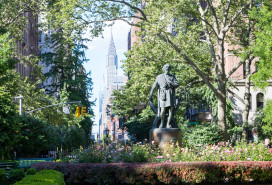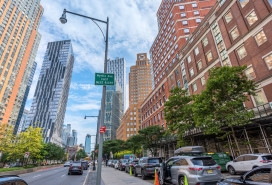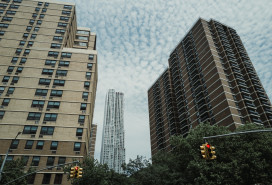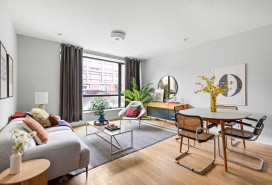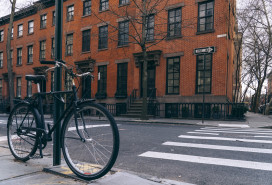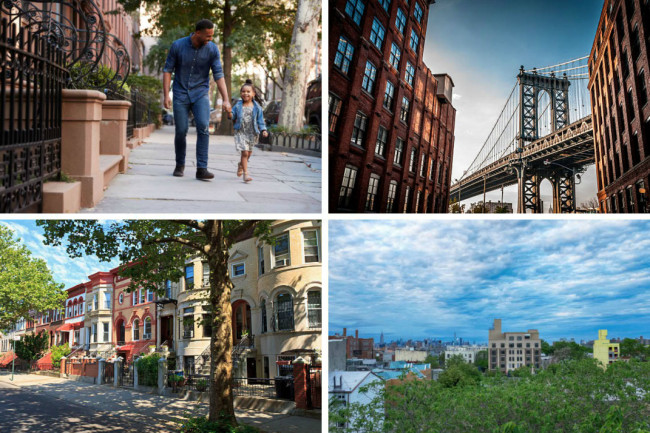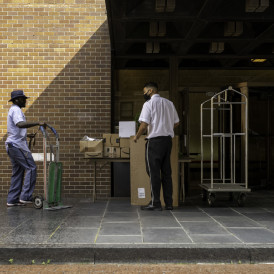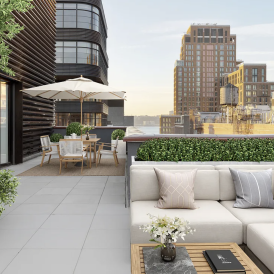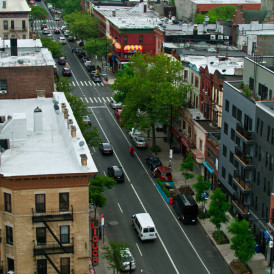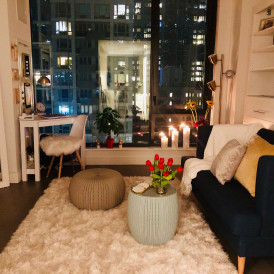The best NYC neighborhoods to invest in: 2019 roundup
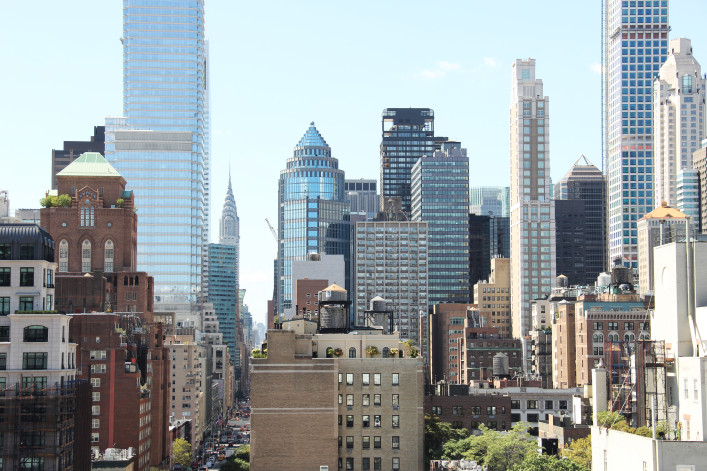
Look for the places where sales have slipped, and where new development is lingering on the market.
iStock
If you’re looking to invest in New York City real estate, you'll want to identify the best neighborhoods where you can put your money to work for you. In order to pinpoint those areas, keep in mind the places where sales have slipped, and where new development is lingering on the market.
At the moment it's a tale of two markets: New development sales are down nearly 40 percent year over year, to the lowest point in 4.5 years, and that's dragging prices down. Resales, on the other hand, appear more immune to this stagnation. The median resale price rose to a new record, $997,750, increasing for the eighth consecutive quarter.
What does that mean to you if you're looking to invest? Investors like to pounce when things go south—but you need to proceed with caution and avoid fire sales because major indicators don't point to a rebound anytime in the near future.
“The market is in dire straights, and it will be for the foreseeable future—over-regulation, political turmoil, global and local financial instability—the market is a mess,” says Gea Elika, principal at Elika Real Estate.
Regardless, brokers will tell you it’s still a good time to buy, thanks to low interest rates and falling prices. Elika says the “best strategy is to buy stable—buy in well-known neighborhoods that have colorful, interesting, desirable histories, and buy the right product.” Here’s our round-up of NYC broker investment advice distilled by neighborhood.
Upper East Side and Yorkville
The Upper East Side is on a lot of buyers' radars. It also topped Brick Underground’s list of best Manhattan neighborhoods for first-time buyers. The area has a sizable co-op inventory which Elika says makes it better able to weather a financial crisis (if there were one) than somewhere like Williamsburg, which is “all condo and everyone is leveraged,” he says. What the UES offers is “a great mix of product," says Elika and in his view “it’s all about buying stability and with the UES, you’re buying a brand name.”
Lisa Lippman, a broker at Brown Harris Stevens, says the UES is undervalued because buyers tend to want to be Downtown but “at First and Second avenues, the value is huge and even on Park Avenue, there’s a lot of really good apartments there—really solid buildings that are just so much less expensive than the Upper West Side and Downtown.”
The Second Avenue subway has made the area much less remote, putting neighborhoods like Yorkville on the map says Ian Wolf, an agent with Douglas Elliman. “There are multiple green space options with Central Park to the west and Carl Schurz Park to the east. And with the new clean Q train making far eastern locations more accessible, it is convenient and easily accessible,” he says.
Chelsea and Upper West Chelsea
The Hudson Yards project has put some attention on its adjacent neighborhoods like Chelsea, which Jordan March, a broker with Mirador Real Estate, says is “heavy with better than your average apartments.”
Upper West Chelsea is also on the map thanks to new restaurants and condos. March says “people are finding the area more accessible and more desirable whereas in the past it was synonymous with being desolate and quiet.”
Matt Hughes, a broker with Brown Harris Stevens, says the “influx of supply of new development” from Hudson Yards is “driving prices down” in Chelsea, making it good value whether you’re looking for something owner-occupied or as a rental investment.
Murray Hill
Murray Hill, between Madison and First avenues, is a neighborhood representing “better values in Manhattan,” says March. Many brokers are advising against paying top dollar for new development. Lippman says many people who have bought new construction in the past two or three years are “now looking at the fact that they probably overpaid.” March, however, says that in Murray Hill, “overall there are new developments that are priced pretty well. It’s good for first-time buyers, who want to feel they are downtown.”
Perhaps most significantly for buyers wanting to rent out units, the university hospitals in Murray Hill and Kips Bay are attracting new residents and staff who are paying top dollar for the location, says Alex Antigua Caba, a broker at Platinum Properties. The biggest rental competition is the American Copper Buildings, where Antigua Caba says "a one-bedroom is around $4,500 to $5,000 and for a very similar square footage you can get a condo that you can rent out for the low to mid $3,000s and that’s great for an investor."
Triplemint's Off-Market Advantage
Discover off-market properties in your dream neighborhood that perfectly suit your needs and budget. Meet and deal with sellers before their apartment hits the market.


Let Triplemint's off-market team give you exclusive access to apartments in your price range and desired neighborhood that no one else has seen. More options, less competition, no bidding wars.
Washington Heights
Another high scorer in our list of best Manhattan neighborhoods for first-time buyers, Washington Heights covers the island's northern tip. “The topography is gorgeous,” says Wolf, and add to that “multiple colleges with well-to-do students who need housing, condos that are still well south of $1,000 per square foot, and the George Washington Bridge giving you access to escape NYC,” and he’s pretty sure the area is a safe investment.
March agrees, saying the area is “a new hipster haven where it feels like the Williamsburg of Manhattan.” For Antigua Caba, Washington Heights is appealing to investors because it has "some tax abatement condominiums that are getting very good rents."
Hudson Square
Not to be confused with Hudson Yards, Hudson Square is a predominantly commercial area between West Houston Street and Canal Street in Lower Manhattan. The housing inventory is a mix of townhouses, former tenements and brick factories—some converted into co-ops—as well as modern condo buildings. Hughes says it provides buyers with “affordable luxury.” He says with Google’s expansion in the area, “if you can get into one of these first residential buildings in the neighborhood and if you have all these employers and executives coming in, that’s only going to drive up prices in the future.” The area's residential personality is still being developed, says Hughes, but even so, you are just a few subway stops from the West Village or Soho.
South Street Seaport
Centered where Fulton Street meets the East River, South Street Seaport was once thought of as “tourist haven,” says Wolf, but now “there is a transformation going on with better restaurants and entertainment options that are now luring Manhattanites to this part of the city many avoided in the past,” he says.
Vickey Barron, a broker with Compass, says she believes the Seaport area and Lower East Side are a “good buy” when it comes to value. She points out 4,000 units are just about to come to market in the area.
Midwood, Bushwick, and Bedford-Stuyvesant
The market contraction means Manhattan is the front-runner when it comes to investing for many brokers. Elika says Brooklyn rose really quickly and in many ways has outperformed Manhattan for the past decade if you look at the speed of sales price rises. “There was a flight to value but I think the pendulum is in the middle now. It’s not swinging in Brooklyn’s favor anymore unless you go deeper into Brooklyn like Midwood,” he says. Midwood has a diverse inventory of low-rise apartment buildings, townhouses, and multi-family units and is featured on our list of best Brooklyn neighborhoods for first-time buyers.
Seth Levin, a broker at Keller Williams, says, "Multi-family homes in both Bushwick and Bedford-Stuyvesant have presented strong investment opportunities for [his] savvy investor clients." He cites the rehabilitation of older, dilapidated housing stock, which has pushed rental prices up. "With low property tax and strong demand for rentals, these have been some of our market’s best performers," he says.
Fort Greene, Clinton Hill, and Brooklyn Heights
The iconic brownstone neighborhoods of Brooklyn still provide good investment opportunities, says March. “There’s charm, originality and more space,” he says. Brownstone Brooklyn is a solid investment, but there’s still some uncertainty about the Brooklyn–Queens Expressway and its impact on the Brooklyn Promenade.
Elizabeth Kee, a broker with CORE, says this provides an opportunity for buyers in Brooklyn Heights. “We’ve seen asking prices drop as much as $100,000 for one-bedroom homes in the first quarter of 2019 for those willing to wait out the impending major construction,” she says. She points out infrastructure upgrades “often boost prices.”
Bay Ridge
With wide residential streets and lots of green space, Bay Ridge feels almost suburban. For a long time, the commute to Manhattan has deterred buyers but now the neighborhood has a direct ferry service to Wall Street. “This would be the year to invest in Bay Ridge while it is on the upswing,” says Kee. The area also topped our list of best Brooklyn neighborhoods for first-time buyers.
Lippman says the best investment right now is to “buy something that’s been on the market for a while.” She recommends looking above your price point, and “if something has been on the market a long time, buy something that has chased the market down.” That’s when the price has been lowered "too little, too late and by then, it’s probably worth less than what the seller lowered it to," says Lippman.
Woodside, Forest Hills, and Maspeth
Levin says his team of brokers has been "bullish on Queens for investment." Levin points out Woodside and Forest Hills have access to the Long Island Rail Road and professionals priced out of Brooklyn are moving to rentals in these neighborhoods. "Investors are benefiting from this migration, while the price-points are still relatively low," he says.
You Might Also Like



